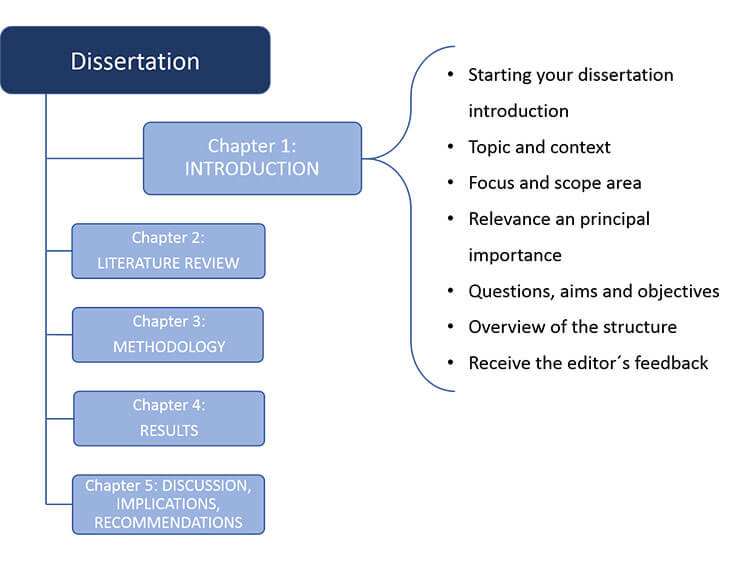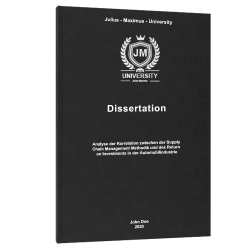
Definition: Dissertation Introduction
Background information is what needs to appear first when it comes to the dissertation introduction. The structure of the other points doesn’t follow any sequence, and it is entirely up to you. You might consider introducing your main focus by presenting the aims and objectives that explain why your research area is essential, and the overall need for that particular research field. The ‘value’ section is crucial to those who will be judging the merit of your work and needs to be in your dissertation introduction, and this is important because it demonstrates that you have considered how it adds value.
FAQs
The introduction of your dissertation justifies your dissertation, the thesis, or other research projects. It also explains what you are trying to answer (research question) and why it’s essential to do this research. It is important that the aim of the research and what it can offer to the academic community is heavily emphasized.
The dissertation introduction describes your dissertation topic and provides the right context for reviewing the literature. You should create good reasons, explain the organizational sequence, and also state your scope of the review. The introduction should clearly ouline the main topics that are going to be discussed.
A practical PhD dissertation introduction must establish the research area by situating your research in a broader context. It must also develop and justify your niche by describing why your research is needed. Also, state the significance of your study by explaining how you conducted your research.
Tip: For a full outline of the dissertation structure, take a look at our blog post.
The introduction of the dissertation consists of ten percent of the whole paper. If you are writing a dissertation of five thousand words, the introductory section should consist of five hundred words. Refer to your research questions or hypothesis if you’re having trouble writing your dissertation introduction.
The primary purpose of writing a dissertation introduction is to introduce the dissertation topic and the primary purpose of your study. You also demonstrate the relevance of your discussion whilst convincing readers of its practical and scientific significance. It’s important that you catch the reader’s attention and this can be done by using persuasive examples from related sources.
Some reliable tips for starting your dissertation introduction include the use of a catchy opening sentence that will get the attention of your reader. Don’t mention everything at this point, but only outline your topic and relevant arguments. Additionally, keep your language straightforward and don’t promise anything that cannot be delivered later.
Tip: It can be challenging to fight off writer’s block, so head over to our blog article for some tips. However, if you’re still having trouble writing your dissertation introduction, start writing the body of the dissertation and come back to the introduction later!
Dissertation Introduction Structure
How to structure the introduction of your dissertation:
Starting your dissertation introduction – this should be the last part to write. You can write a rough draft to help guide you. It’s crucial to draw the reader’s attention with a well-built beginning. Set your research introduction stage with a clear focus and purpose that gives a direction.
Topic and context – introduce your problem and give the necessary background information. Aim to show why the question is timely or essential. Mention a relevant news item like an academic debate.
Focus and scope – after introduction part, narrow down and focus on defining the scope of your research. For instance, what demographics or communities are you researching? What geographical area are you investigating?
Relevance and importance – show how your research will address the problem gap in your identified research area. Cite relevant literature and describe how the new insights will contribute to the importance of your research. Explain how your research will build on existing research to help solve a practical or theoretical problem.
Questions and objectives – this is where you set up the expectations of the remaining part of your dissertation. You can formulate the research questions depending on your topic, focus, and discipline. Also, state the methods that you used to get the answers to your questions here if your dissertation doesn’t have a methodology chapter. If your research aims at testing hypotheses, formulate them here.
Overview of the structure – this part summarizes sections and shows how the introduction of your dissertation contributes to your aims and objectives. Keep this part short by using one or two sentences to describe the contents of each section.
Receive the editor’s feedback – some professional editors will proofread and edit your paper based on instructions given, such as the academic style. They will also check grammar, vague sentences, and style consistency and provide a report on your language use, structure, and layout.
- ✓ 3D live preview of your individual configuration
- ✓ Free express delivery for every single purchase
- ✓ Top-notch bindings with customised embossing

Writing a Dissertation Introduction
In academic writing, there are active steps that a writer can take to attract the reader’s interest. Establish a specific area by showing your target audience that it’s significant and exciting. Introduce and evaluate previous research in the same area. Determine a niche by indicating the gaps in previous studies.

An excellent dissertation introduction allows you to:
- List hypotheses or research questions
- State the nature of your research primary purposes
- Indicate the outline of your academic project
- Announce important research findings
- State the value of previous studies in that field.
Dissertation Introduction Tips
Knowing when to use which tense in your dissertation or thesis is a common problem. A dissertation introduction is a plan of a study not yet conducted, so any reference needs to be in the future tense. Any reference to a study that is already published should be in the past tense. Statements regarding a program, theory, policy, or a concept that is still in effect should be in the present tense. Stay impersonal and make use of a list.
For example, say: firstly, secondly, etc., rather than first, second, etc.
Use ‘a’ when talking about something in general and ‘the’ when talking about something in particular.
Dissertation Introduction Example
How to write a dissertation introduction:

Dissertation printing & binding
You are already done writing your dissertation and need a high quality printing & binding service? Then you are right to choose BachelorPrint! Check out our 24-hour online printing service. For more information click the button below:
In a Nutshell
- A dissertation introduction is like a road map that tells your audience the direction your research will take.
- The introduction is the summary of the general context and scope of your topic and gives reference to previous literature on the subject.
- It includes the purpose of your research and the reasoning about why it’s relevant to conduct the study.
- It describes the research processes and gives an idea of the study, and also addresses the type of references available.
- It provides a summary of the specific questions and issues to address in the proposal.

